And What to Do When You Get There
There’s a particular kind of magic to Piedmont, Italy. It’s not the loud, showy kind—it’s the kind that unfolds slowly, one fog-draped hill at a time. Located in the northwest corner of Italy, bordering both France and Switzerland, Piedmont (Piemonte, meaning “at the foot of the mountain”) is often overshadowed by better-known regions, such as Tuscany or the Amalfi Coast. But make no mistake: for those who value incredible food, fine wines, and deeply rooted traditions, Piedmont is a dream destination.
We based ourselves in Benevello, CN, just a stone’s throw from Alba—the heart of truffle country. The landscape was like something out of a Barolo-colored watercolor painting: rolling vineyards, hilltop villages, and medieval towers piercing the sky. With every turn, the region invited us to slow down, dig in, and connect.
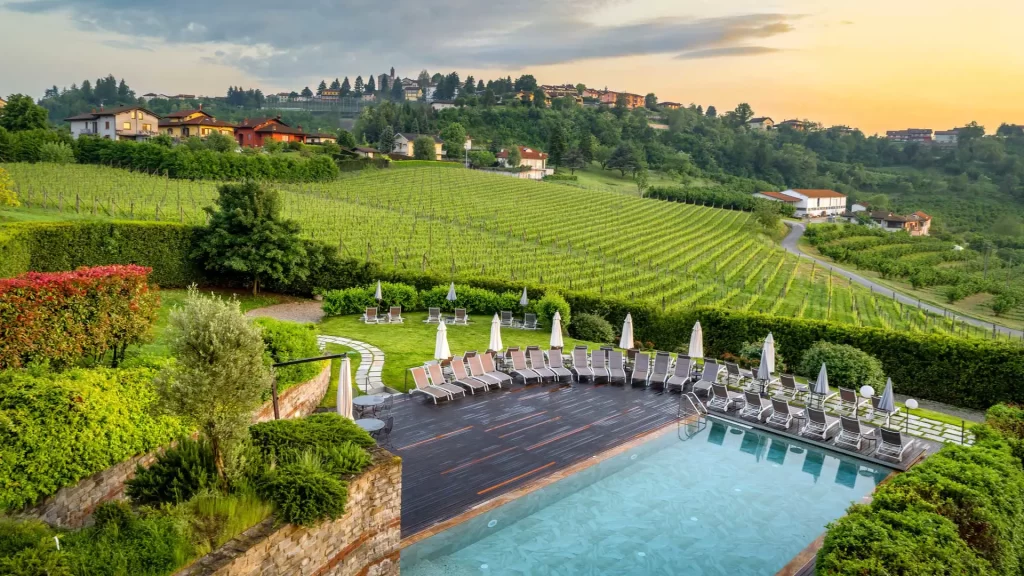

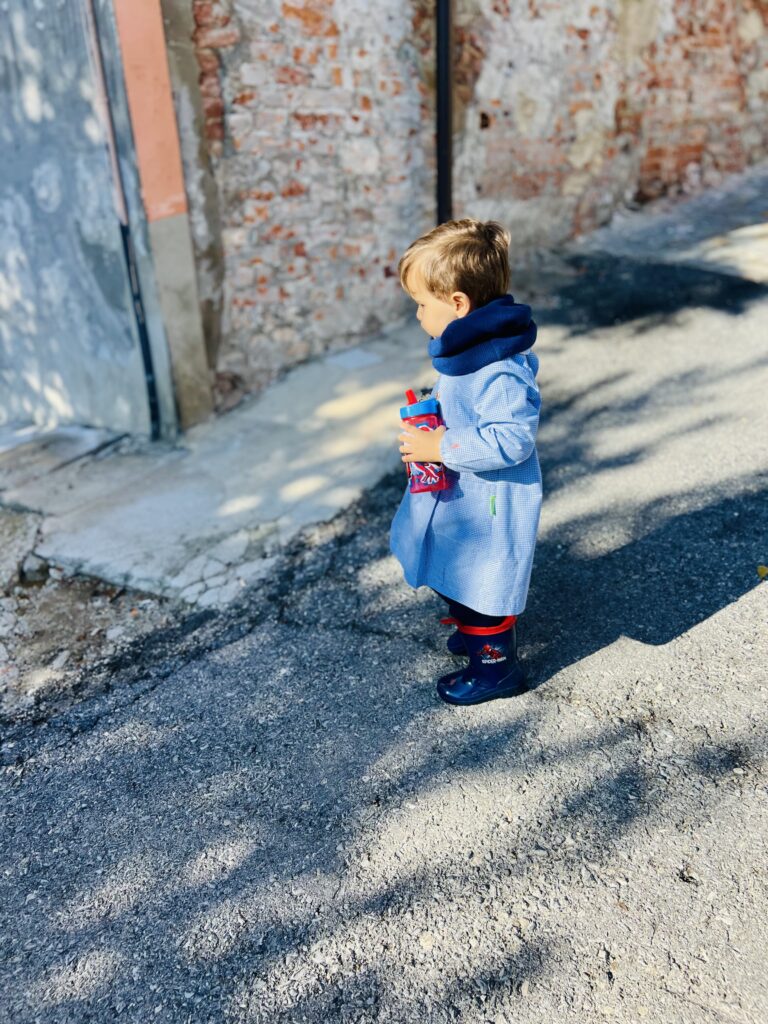
Here’s a taste of what made this region so unforgettable:
The Hazelnut Farm: Where Chocolate Dreams Begin
One of our first stops was a family-run hazelnut farm, Gallesio Sandro Azienda Agricola in the hills outside Alba, where the famed Tonda Gentile hazelnut is grown. These hazelnuts are prized across Italy and used in everything from local pastries to the world’s best chocolate spreads. The family explained their process, from the orchard to the final product —the prized hazelnut. Afterward, we sampled the various hazelnut products while learning about their production process. It is an insightful glimpse into small-scale hazelnut cultivation and production in the region.

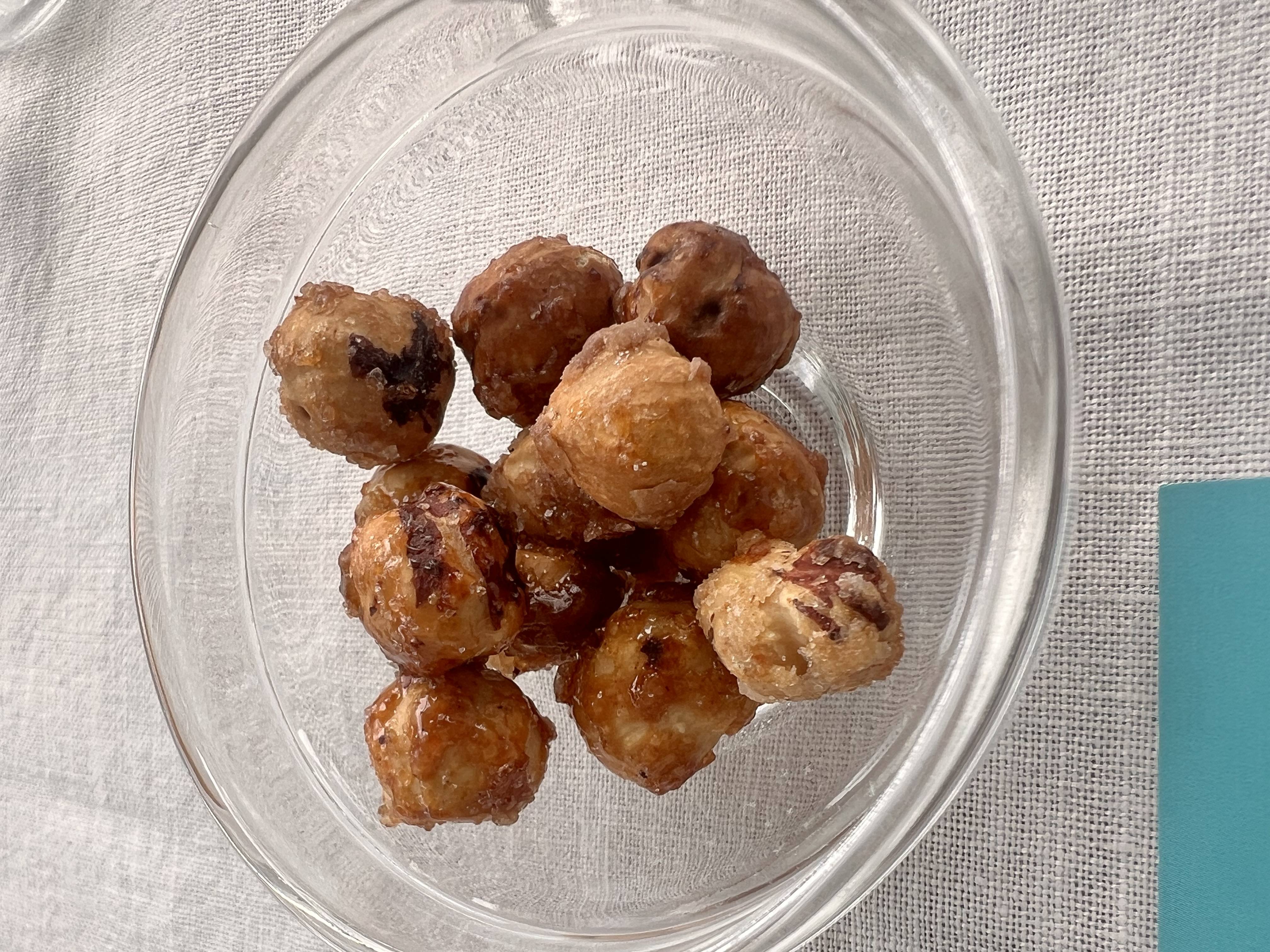
Although we weren’t able to walk through the groves, we listened to stories of seasonal harvests, and watched the slow-roasting process that gives the nuts their creamy, rich flavor. Of course, there were tastings—and yes, we brought home jars of velvety hazelnut cream (fondant) that made anything store-bought pale in comparison.
Afternoon Exploring Alba
Discovering new places, such as Alba, is always one of my priorities when traveling. This charming town offers a bit of everything—ancient history, medieval allure, and a culinary scene that exceeds expectations for its size. Alba is globally renowned for its white truffles, especially celebrated during the International White Truffle Fair held every autumn. And did you know that the Ferrero company, famous for products like Nutella, Ferrero Rocher, and Kinder, is headquartered in Alba? Navigating the winding cobblestone streets and picturesque piazzas of this medieval village nestled in the rolling hills of Piedmont was an adventure in itself! My niece even found the perfect gift for her fiancé during our explorations. We also stumbled upon a fantastic restaurant where we enjoyed a delicious lunch featuring white truffles and pasta in a cozy basement setting. Sipping bold red wine, sampling truffle-infused cheese, and admiring the medieval towers made for an unforgettable day!
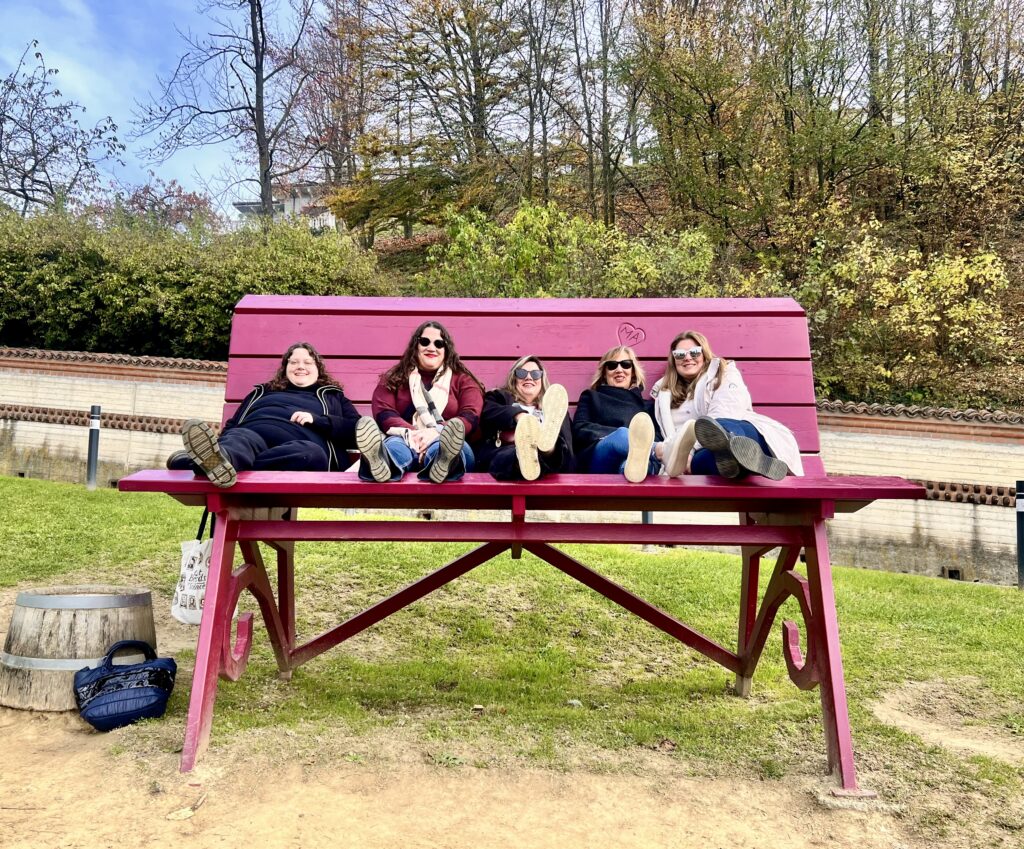


Cooking in the Clouds: A Hands-on Langhe Kitchen Experience
In a warm, sunlit kitchen perched above the vineyards, we spent a morning making tajarin pasta from scratch, guided by a Patrizia Mollo, a local cook who reminded us that good food begins with patience and love. Tajarin (pronounced tah-yah-REEN) is a delicate, ribbon-like egg pasta that dates back to the Middle Ages. The handmade tradition of rolling and cutting by hand is a labor of love that has been passed down through generations. The pasta is typically served with butter and shaved white truffles from Alba or a rich meat ragù. That afternoon, we enjoyed tajarin with a rich meat ragù. If you ever find yourself in a Langhe farmhouse kitchen, be sure to experience rolling out the tajarin by hand and then cutting the dough for a step back in history and culture.
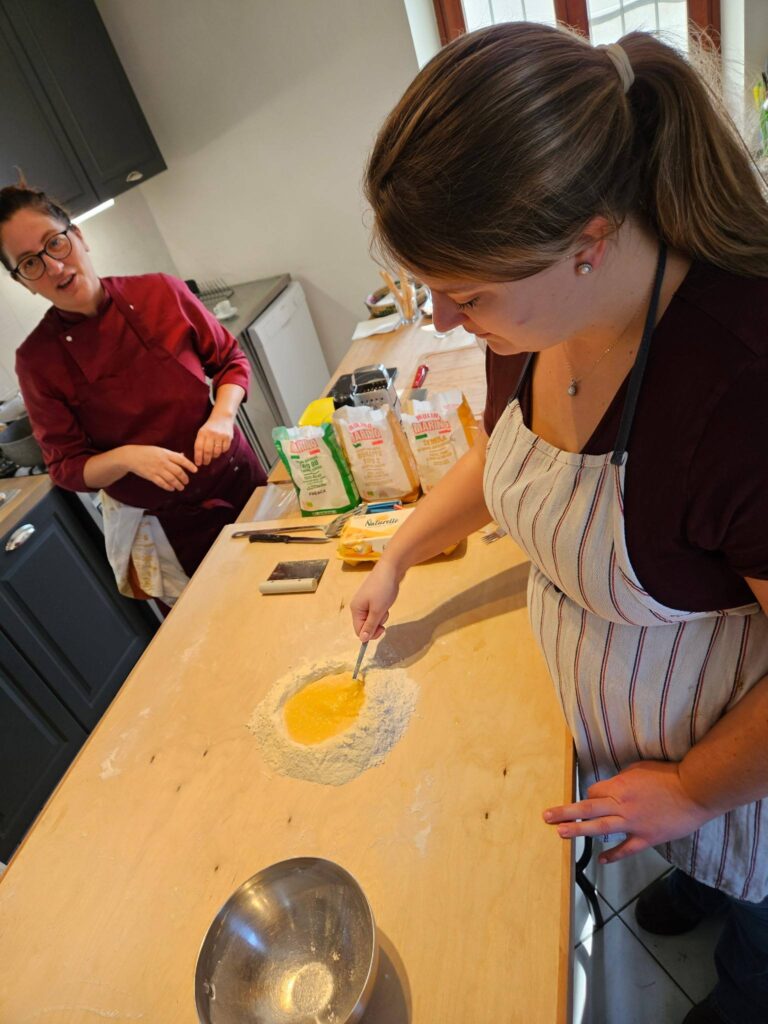
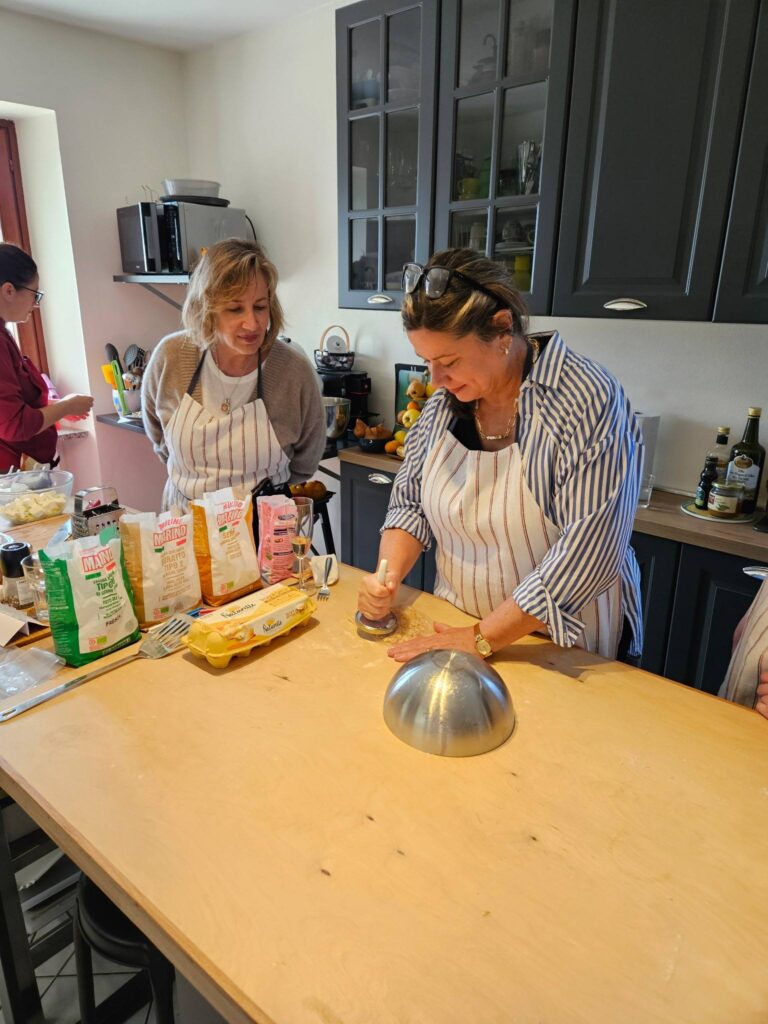
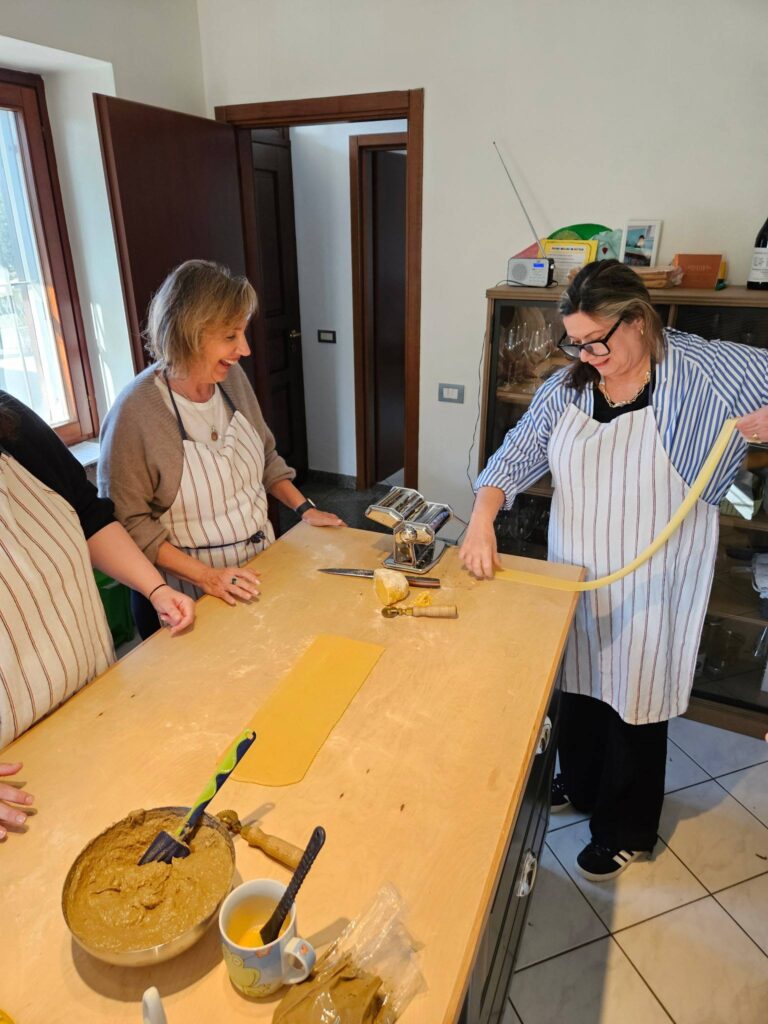
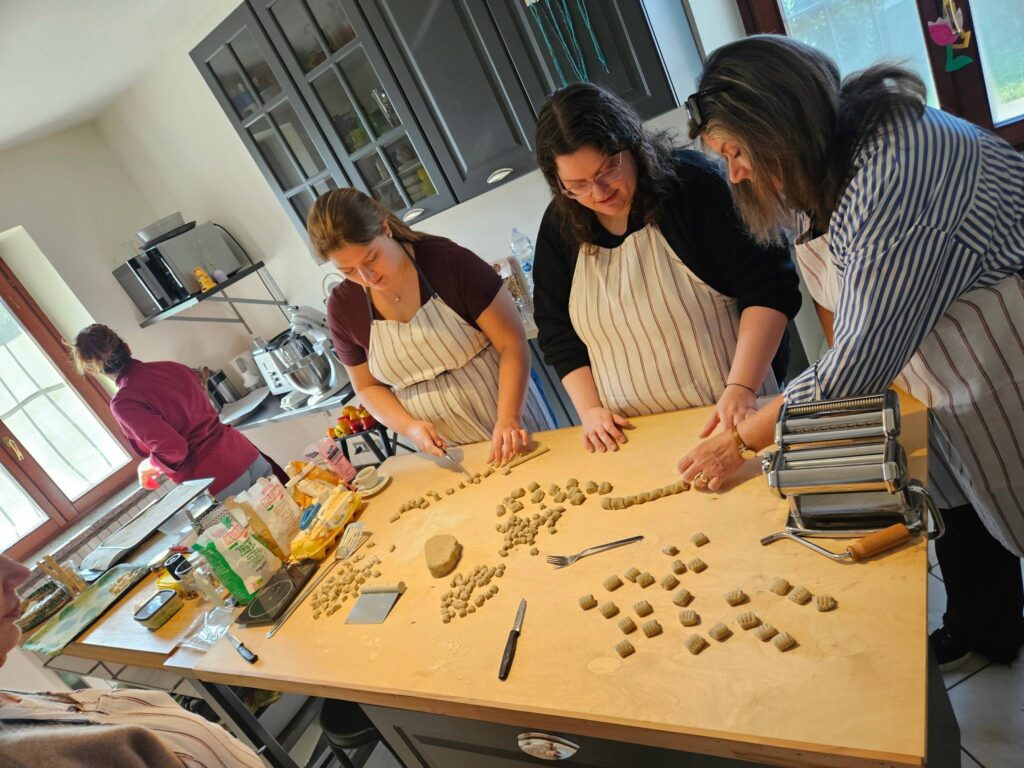
By the time we sat down to enjoy our meal, paired with a robust Dolcetto wine, we didn’t just feel like visitors—we felt like part of the family.
Trekking Through the Vines to Barolo
On another day, we laced up our hiking shoes and set off on a vineyard trek through the Langhe hills. It was an immersive way to understand the land and the people behind the bottle. The sun warmed the vines, the breeze carried hints of crushed herbs, and we trekked through the vineyards that gave birth to these grapes.
We eventually reached Barolo, the village that lends its name to Italy’s “king of wines and the wines of kings.” The Barolo zone includes 11 communes. Each has its unique soil composition and microclimate, resulting in distinct expressions of Barolo – from floral to bold and tannic. The vineyard landscapes of Langhe, including Barolo, are a UNESCO World Heritage Site celebrated for their beauty and centuries-old winemaking traditions. After finishing our three-hour trek through the vineyards, we enjoyed a leisurely, unforgettable lunch in a small, local Barolo town restaurant. Bellissimo – and our Barolo tasted like velvet in a glass. (Images courtesy of Adrienne Cianfarini)
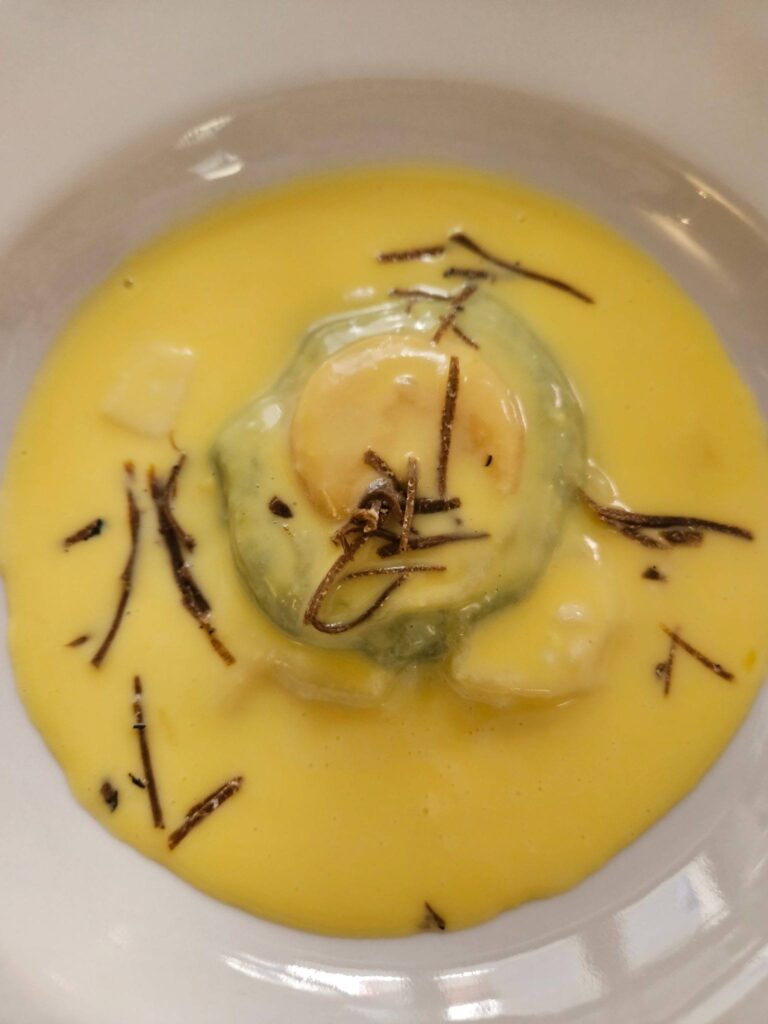
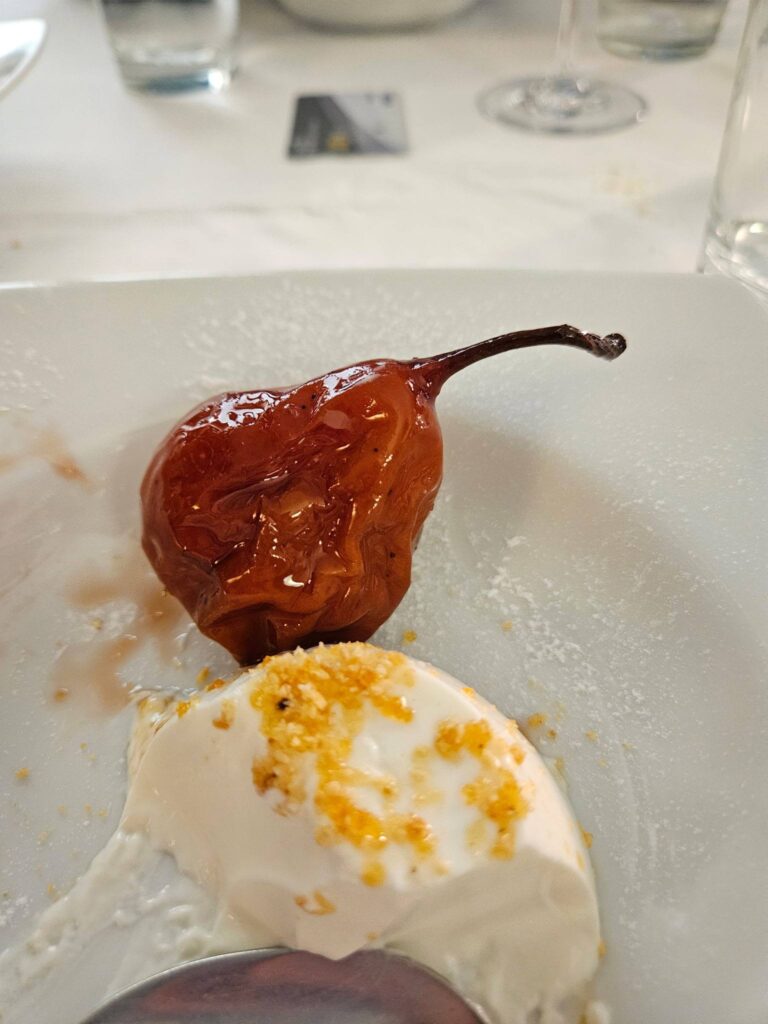
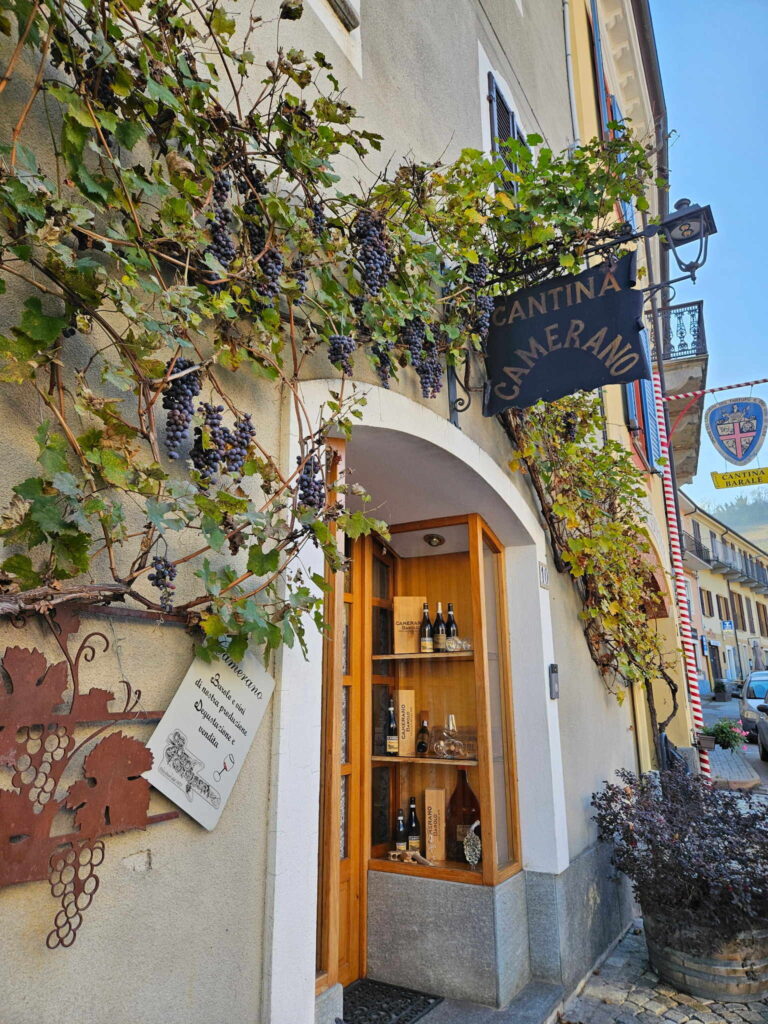
Truffle Hunting & Cheese Tasting: A True Piedmontese Ritual
Of course, truffle hunting was on the itinerary. We joined a local trifolao and the truffle hunter’s spirited dog for a stroll through the forest. With every sniff and scratch of the earth, we felt the suspense build. When the dog finally signaled a find, and the truffle was unearthed, it felt like discovering buried treasure.
Later that afternoon, we visited a charming sheep dairy, where every sheep has a name and a distinct personality. The cheesemaker shared the family craft with such tenderness and care that it was impossible not to be moved. We sampled creamy robiola, tangy tomini, and rustic-aged rounds while the sheep grazed nearby. It was humble, nourishing, and completely unforgettable.
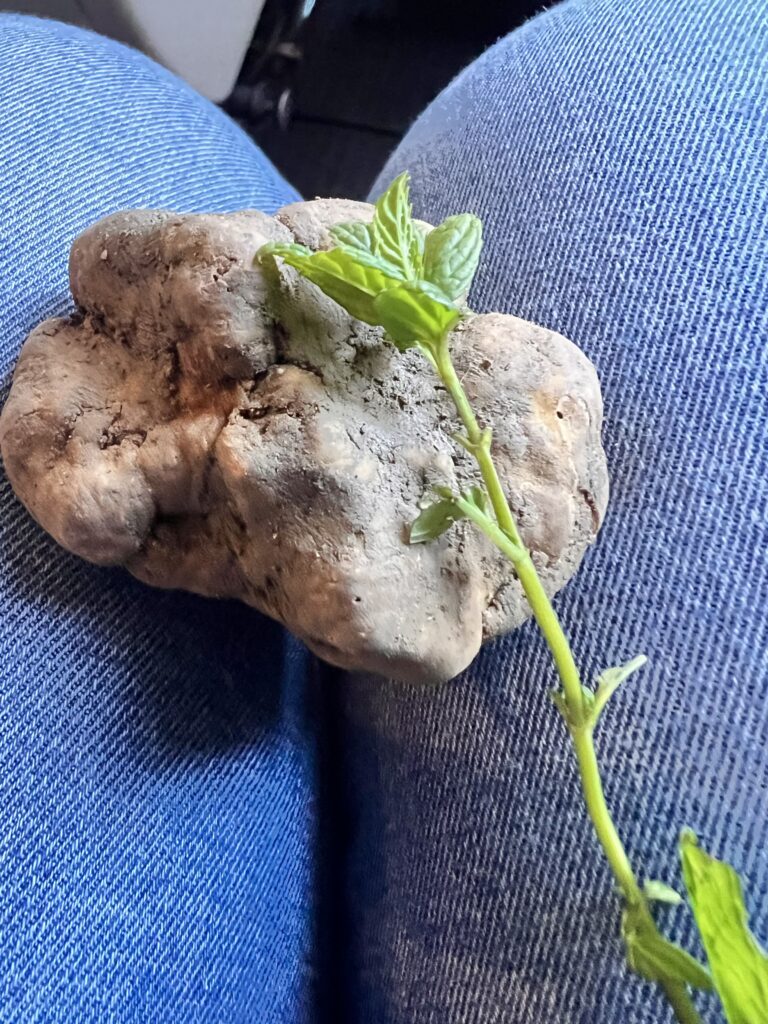

Getting to Piedmont from the U.S.: Easier Than You Think
If you’re wondering whether traveling to Piedmont is worth it, the answer is yes! It’s more accessible than many travelers assume.
From the East Coast of the U.S. (including New York, Boston, and Washington, D.C.), there are nonstop flights available to Milan (MXP) and Rome (FCO) nearly every day. Milan is only about a 2-hour drive or a relaxing train ride away from the Langhe region.
For travelers from the West Coast (such as Los Angeles, San Francisco, or Seattle), one-stop flights through European Piedmont’sParis, Frankfurt, or Amsterdam can take you to Milan or even Turin (TRN), which is the capital of Piedmont. Turin is even closer to the Langhe region, yet many travelers tend to overlook it.
Once in Italy, you can rent a car or catch a regional train from Milan to Alba, Bra, or Asti. If you’re arriving from Rome, you can take a high-speed Frecciarossa in either Turin or Milan before continuing your journey by car or local transfer.
If you’re seeking a more comfortable experience, consider hiring private drivers or using boutique hotel transfers for a stress-free option.
Final Thoughts: Piedmont is a Love Letter to the Senses
Piedmont isn’t flashy, and that’s precisely what makes it appealing. It’s a destination that invites subtlety over extravagance. Here, you can connect with artisans, savor each bite, walk at a slower pace, and truly appreciate the landscape—and the wine—with intention.
Whether you visit for the truffles, the wine, the cheese, or simply the breathtaking scenery, you will leave feeling nourished, grounded, and utterly enchanted.
Planning a trip to Piedmont? Check these curated tours, winery visits, and lodging recommendations here. Subscribe or follow along. You won’t miss a sip or a slice of this unforgettable region. Looking at other regions in Italy? Check these blog posts for good information as you plan your trip: Northern Italian Lakes, Rome and Puglia.
#piedmont #barolo #barbaresco #milan #alba #asti #whitetruffles #turin #alwaysfood

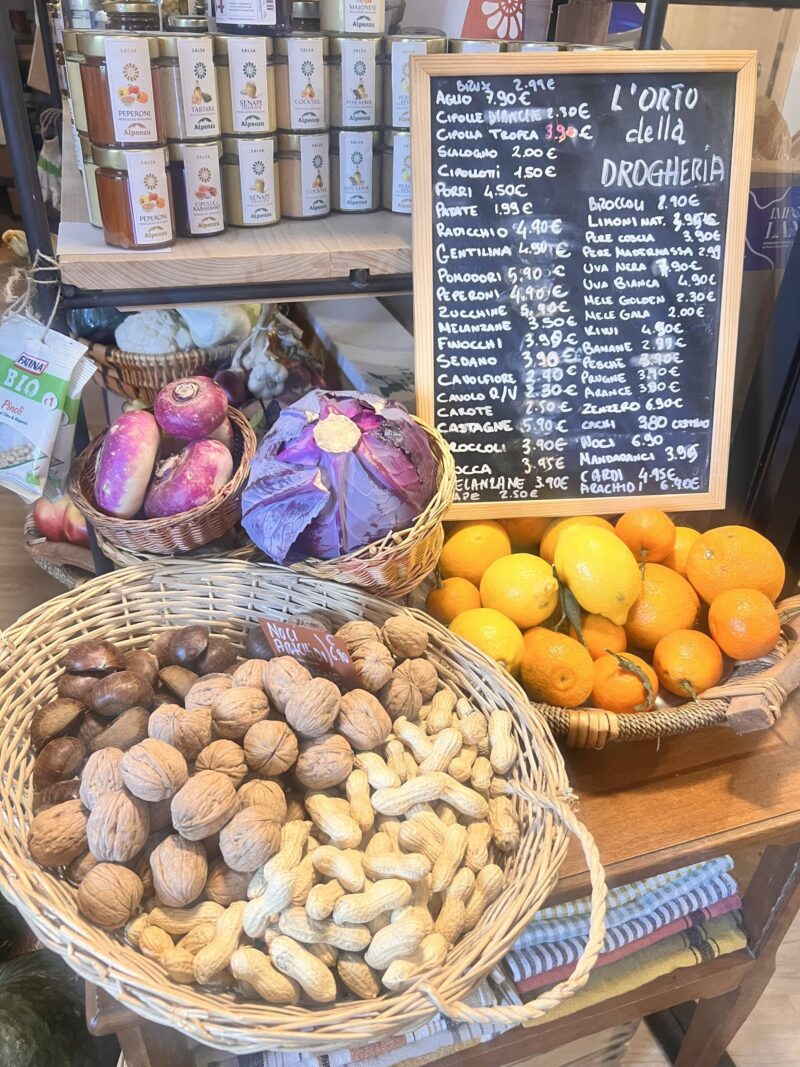
One thought on “Compelling Reasons to visit Piedmont, Italy: A Gem”